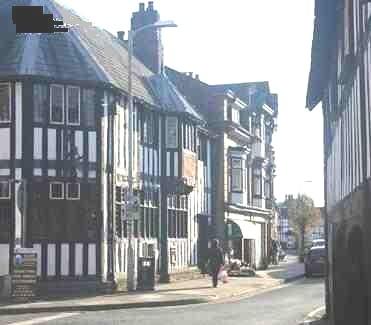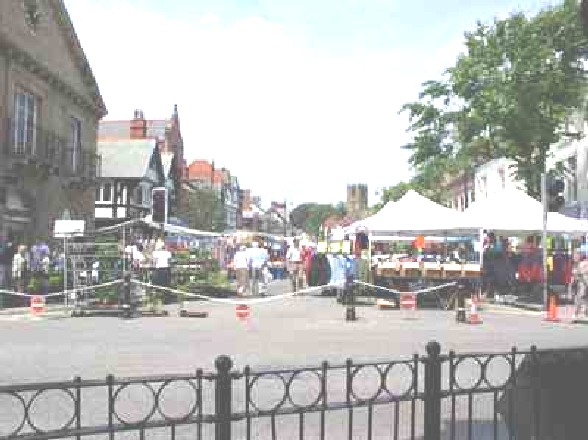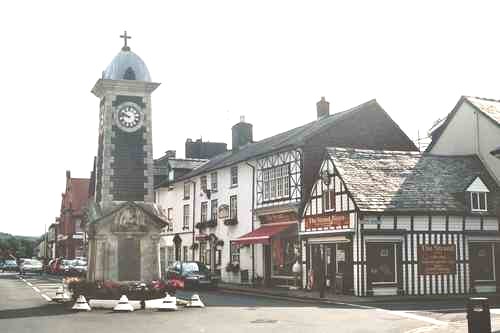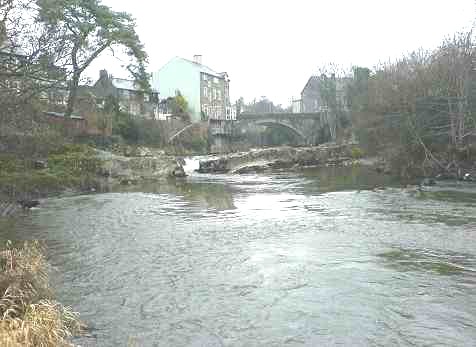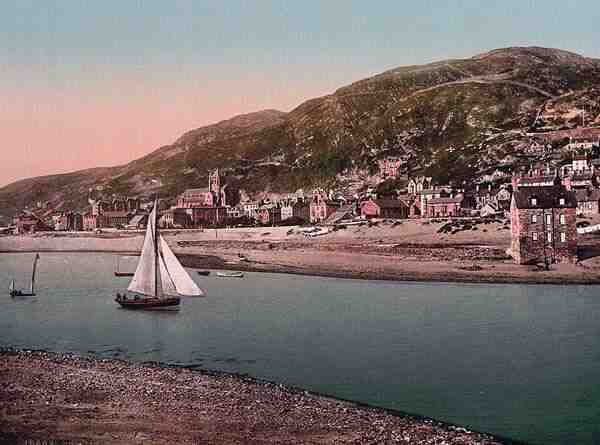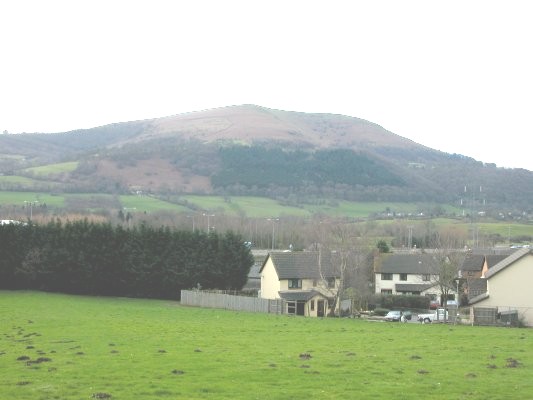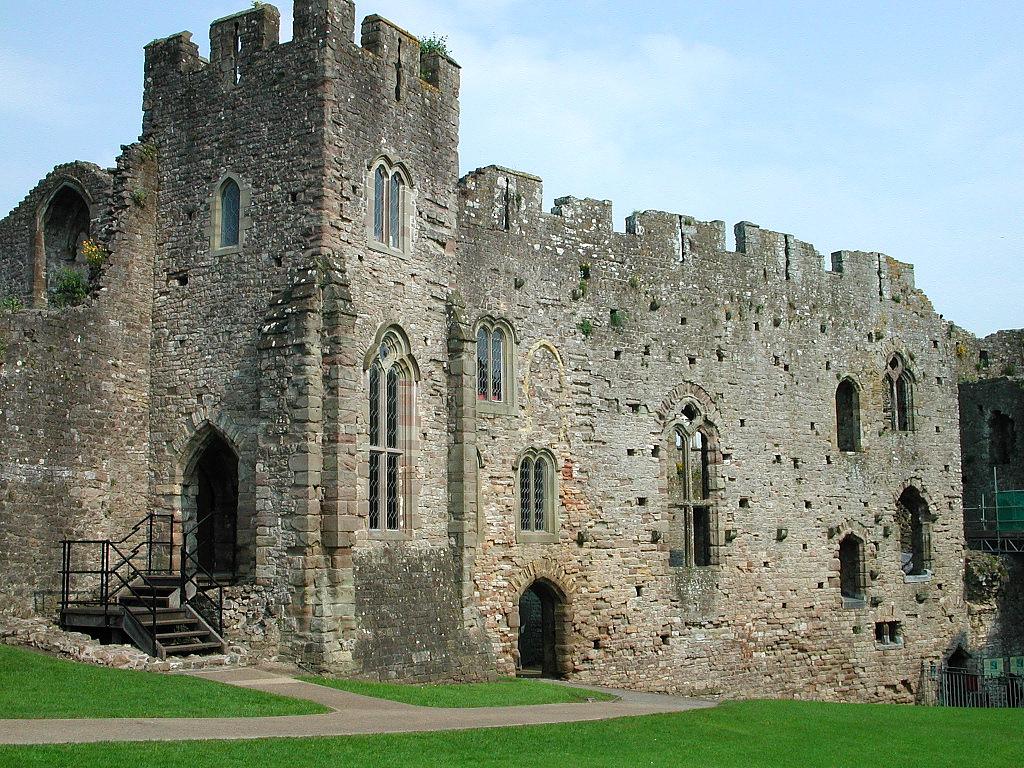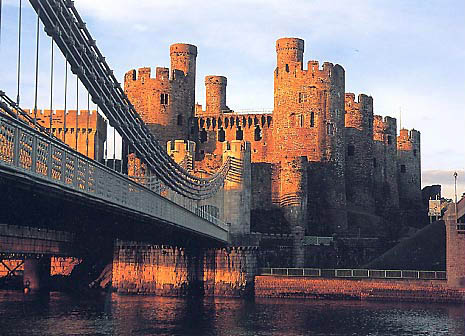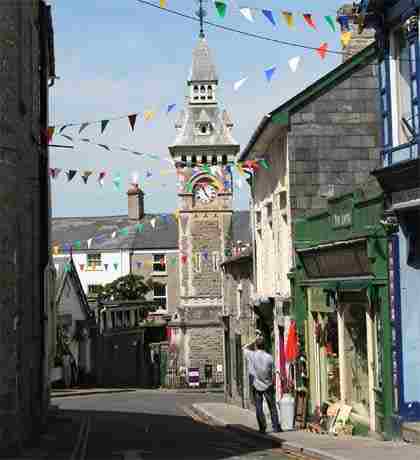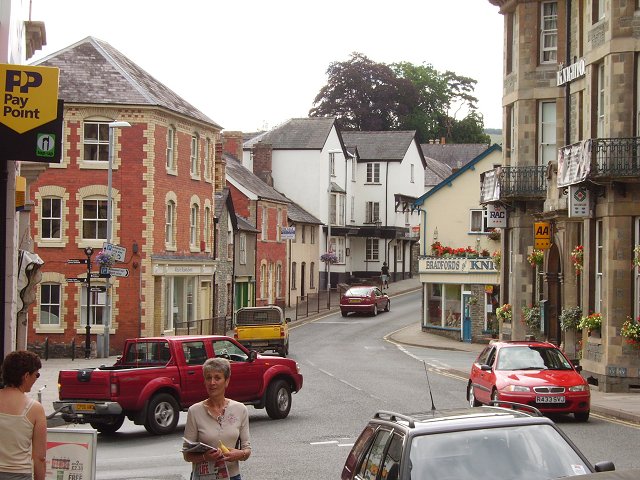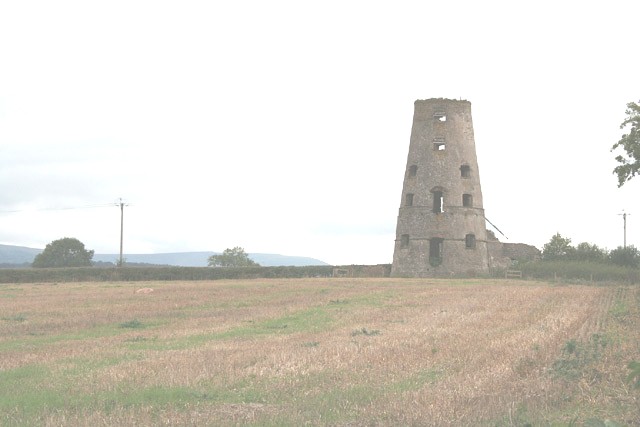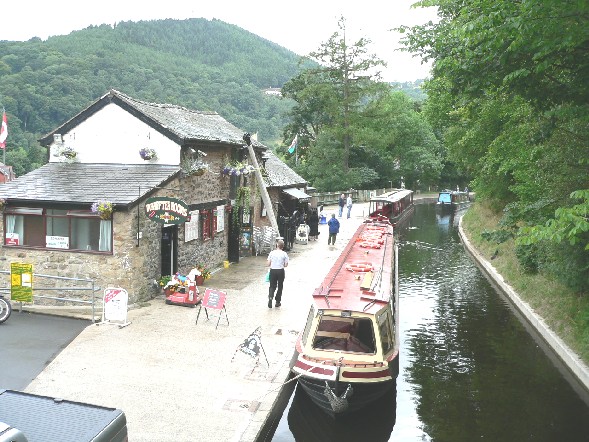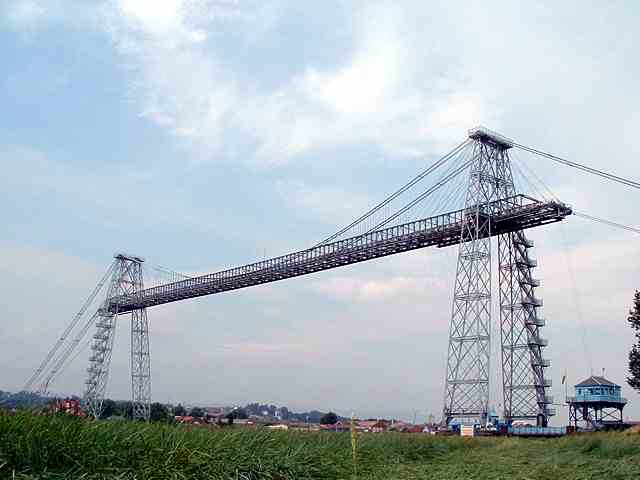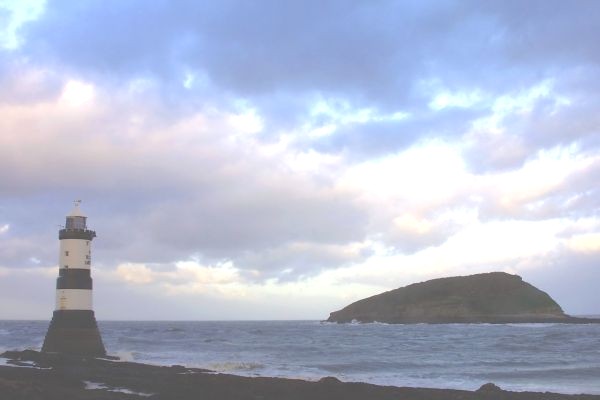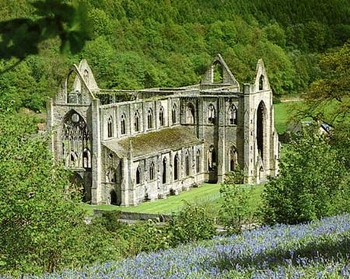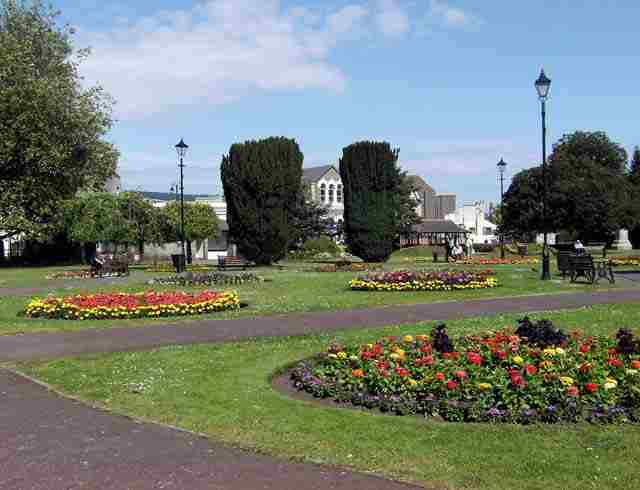Biography of H P Blavatsky

Cardiff
Theosophical Society in Wales
206 Newport Road, Cardiff, Wales, UK. CF24 -1DL

Helena Petrovna
Blavatsky (1831 – 1891)
The Founder of
Modern Theosophy
Biography
of
H
P Blavatsky
From
Josephine Ransom's
A
Short History of the Theosophical Society.
HELENA PETROVNA
HAHN was born prematurely at the
Helena (called
also Helene, Heliona, Ileana and Helen), came, on her mother’s side, from the
princely ruling Dolgoroukis, of whom her grandmother, Princess Elena (Helene)
Pavlovna Dolgorouki, who married Andre Mikaelovitch Fadeef, was the last direct
representative. On her father’s side she was descended from the ruling Princes
of
In after years
when Col. Olcott asked why permanent control was not put upon Madame
Blavatsky’s fiery temper, a Master explained to him that such a course would
lead to death from apoplexy. The body was vitalised by a fiery and imperious
spirit which from childhood had brooked no restraint, and if vent were not
given for the excessive corporeal energy the result must be fatal. He was told
to look into the history of the Dolgoroukis, to understand what was meant.
The Dolgoroukis
were direct descendants from Rurik, the first to govern a large part of the
country which came to be called
In Hints on
Esoteric Theosophy, (By A. O. Hume, p. 73.) it is said that H. P. B. possessed
“in some degree as an inheritance from an adept ancestor, the special capacity
requisite for great success in occult studies.” This was apparently Vseslav
(disappeared about 1095), son of Yaroslav’s elder brother. His claims to
sovereignty had been overlooked and he strove all his life to be recognised,
but failed. The people believed him born of enchantment and feared him. He was
credited with powers of disappearance, and incredible swiftness of movement.
Because of the strange system of each member of the family moving in turn
nearer to the Kief headship when it became vacant, quarrels, hatreds and
murders of those in the way never ceased. Vladimir II, Monomachos (1113-25) had
eight sons the sixth of whom Yuri (George) was called Dolgorouki (long-handed
or grasping). He founded Moscow, and from him descended all the Grand Dukes in
Russia, the powerful northern line of Princes so famous in history.
In 1224 the
Mongol hordes over-ran Russia, conquering and destroying all they could reach.
No one could live who did not bow down to them, the “Golden Horde.” All Princes
had to appear yearly with tribute before the Khan, and receive investiture from
him. For two hundred years this lasted till Ivan III (d. 1533), a Dolgorouki,
refused the tribute, 1480, and threw off the Mongol yoke. The arrogant Golden
Horde broke up, and over its remnants at Astrakhan H. P. B.’s grandfather was
Governor. Ivan III united all Russia and thought the title of Grand Duke was
not sufficient. Ivan IV, the Terrible, on attaining his majority at 17 years of
age, demanded to be crowned with the title of Tsar (Caesar). He drew all
authority to himself. His son Fedor being unfit to rule, Boris Goudenoff, the
regent, developed this authority into compulsory service for the aristocrats
and serfdom for the people. With Fedor died out, 1598, the long Dolgorouki
dynasty. Then the Romanoffs were called in, a “younger” branch, as Michael
Romanoff was a grandson of Ivan IV. Even so, we find the Dolgoroukis
influential and controlling counsellors and advisors in the Courts of the
succeeding Tsars. A Dolgorouki Princess was betrothed to Peter II, but he died
before the marriage.
From this brief
indication of H. P. B.’s ancestry it will be understood why she was so well
known, not only in Russia but throughout Europe, and why she was so anxious not
to implicate her family in any of her own actions; though for herself she was a
rebel against public opinion and the conventions of society. At eleven years of
age
Fairy tales and
old legends, told to her by the servants, were
All too soon
the question of marriage loomed for Helena Hahn. There are several accounts as
to why she married, in 1848, the elderly General Nicephore V. Blavatsky,
Vice-Governor of the Province of Erivan. General Blavatsky’s ancestors were
derived also from the early Russ adventurers, who settled in S. E. Russia, the
Ukraine, and probably intermixed with the Tartars. His family came of the
“Hetman Blavatko” or chiefs, an essentially military society. The General took
Helena to a summer retreat in Erivan. She tried to escape on the way but
failed, and for three months lived there in misery, for she would concede
nothing. At last she managed to escape to her family, who sent her to her
father. She feared he would want her to return to her husband, so she escaped
again, in disguise. Then began years of wandering and adventure.
During her
travels Helena Petrovna Blavatsky (H.P.B.) kept in touch with her father, who
realised that his unusual daughter must go her own way. He kept her supplied
with funds, though she was often in want, for she was careless of money.
General Blavatsky himself endeavoured to obtain a formal divorce, but Russian
laws were strict. It was necessary for H. P. B. to spend ten years out of the
country to make the separation legal.
H. P. B. was
emphatic that prior to the formation of The Theosophical Society her private
life concerned no one but herself, and she only reluctantly gave any details
about it. There is much to be learned of it however, scattered throughout a
number of books and records. It is impossible here, for want of space, to give
details of her many journeys all over the world in search of occult knowledge,
during which she found her way to the ashramas (retreats) of her Master and
other members of the Great Brotherhood in the Himalayas, where she garnered the
priceless knowledge with which she afterwards enriched the world’s literature.
She acquired a profound knowledge of the philosophy and esotericism of Tibetan
Buddhism, which shows in her writings.
On the physical
plane H. P. B. met her Master and Guardian first in 1851 in London, and more
frequently later. She so oriented herself to His thought in true
disciple-fashion that she was sensitive to His every hint or direction. Under
His guidance she passed from strength to strength in her power to control many
unusual forces, by means of which she produced the phenomena which caused so
much scepticism, alarm, opposition and shock to a materialistic and
conventional world.
In the section
of this History entitled “Preparation,” are traced her efforts and her success
in bringing into being an organisation to combat the prevailing lack in the
West of a profound and searching understanding of life such as existed already
in the East, and to make it accessible to the many instead of only to a few
scholars, most of whom seemed to have little insight into the meaning of the
riches they handled.
H. P. B.
entered the Spiritualistic movement to explain its phenomena, to expose its
frauds, to enlarge its spiritual scope, and to give to it the dignity in the
world of science which was its due. But scientists mostly decided not to follow
the road of investigation along which she led - it was too thorny, too
uncharted. It was easier to leave it alone and declare her mistaken. There is
no need here to recite the number of phenomena with which she enticed eager,
adventurous minds to explore and know for themselves the deeper laws of life.
There is such a mass of these phenomena that the mere bulk of them is
impressive and cannot lightly be dismissed. They await the patient investigator
who will sift, weigh and present them with judgment and acumen.
About the time
that H. P. B. was instrumental in establishing The Theosophical Society her
appearance was often mentioned in newspapers and elsewhere. She was described
as being of average height, sharing the family plumpness which turned to
corpulency as she grew older, and which was aggravated by her sedentary life.
She had a massive face, often described as Kalmuck, though she had no Mongol
blood, which suggested power and culture, “a rare countenance,” and over her
features a combination of moods seemed constantly to play. Her hair was light
brown, thick, very wavy, silken soft and drawn back from her face. Her
brilliant penetrating blue-grey eyes were characteristic of her race, as was
her self-possession and her air of command. Her beautiful arms and hands were
regarded as ideal models for a sculptor. She dressed usually in a loose robe,
which suited her, and despite all excentricities of appearance, she impressed
all who met her with a sense of her dignity and imperiousness.
H. P. B. with
all these gifts seemed indeed the right person to undertake the great task
entrusted to her. Much has been written of her dual personality, and into that
again it is not possible to go here. There was undoubtedly a great personage
behind the personality, and that personage came and went according to need; one
whose wisdom was far greater than could be given to the unready, one whose
knowledge was at times forbidden expression lest it cause trouble through
misunderstanding; but one whose courage and trustworthiness privileged her to
be a Messenger of Truth from the Great White Brotherhood to the world at large.
In 1881, when
the septenary “term of trial” of The Society drew near, the Master M. wrote of
Madame Blavatsky and Col. Olcott:
“One or two of
us hoped that the world had so far advanced intellectually, if not intuitionally,
that the Occult doctrine might gain intellectual acceptance, and the impulse
given for a new cycle of occult research. Others - wiser as it would now seem -
held differently, but consent was given for the trial. It was stipulated,
however, that the experiment should be made independently of our personal
management; that there should be no abnormal interference by ourselves. So
casting about we found in America, the man to stand as leader - a man of great
moral courage, unselfish, and having other good qualities. He was far from
being the best, but … he was the best one available. With him we associated a
woman of most exceptional and wonderful endowments. Combined with them she had
strong personal defects, but just as she was, there was no second to her living
fit for this work. We sent her to America, brought them together - and the
trial began. From the first both she and he were given to clearly understand
that the issue lay entirely with themselves. And both offered themselves for
the trial for certain remuneration in the far distant future as - as K. H.
would say - soldiers volunteer for a Forlorn Hope.” (Mahatma Letters, p. 263.)
From Josephine
Ransom's A Short History of the Theosophical Society.
______________________

Cardiff Theosophical Society in
Theosophy House
206 Newport Road, Cardiff, Wales, UK. CF24
-1DL
Find
out more about
Theosophy
with these links

The Cardiff Theosophical Society Website
The
National Wales Theosophy Website
If you run a Theosophy Group, please feel free
to use any of the material on this site
The Most Basic Theosophy
Website in the Universe
A quick overview of Theosophy
and the Theosophical Society
If you run a Theosophy Group you
can use this as an introductory handout.
Theosophy Cardiff’s Instant Guide
One liners and quick explanations
H P Blavatsky is
usually the only
Theosophist that
most people have ever
heard of. Let’s
put that right
The Voice of the Silence Website
An Independent Theosophical Republic
Links to Free Online Theosophy
Study Resources; Courses, Writings,
The main criteria
for the inclusion of
links on this
site is that they have some
relationship
(however tenuous) to Theosophy
and are lightweight,
amusing or entertaining.
Topics include
Quantum Theory and Socks,
Dick Dastardly and Legendary Blues Singers.
A selection of
articles on Reincarnation
Provided in
response to the large
number of
enquiries we receive at
Cardiff
Theosophical Society on this subject
The Voice of the Silence Website
This is for
everyone, you don’t have to live
in Wales to make
good use of this Website
No Aardvarks were harmed in the
The Spiritual Home of Urban Theosophy
The Earth Base for Evolutionary Theosophy
A B C D EFG H IJ KL M N OP QR S T UV WXYZ
Complete Theosophical Glossary in Plain Text Format
1.22MB
________________
Preface
Theosophy and the Masters General Principles
The Earth Chain Body and Astral Body Kama – Desire
Manas Of Reincarnation Reincarnation Continued
Karma Kama Loka
Devachan
Cycles
Arguments Supporting Reincarnation
Differentiation Of Species Missing Links
Psychic Laws, Forces, and Phenomena
Psychic Phenomena and Spiritualism
Quick Explanations with Links to More Detailed Info
What is Theosophy ? Theosophy Defined (More Detail)
Three Fundamental Propositions Key Concepts of Theosophy
Cosmogenesis Anthropogenesis Root Races
Ascended Masters After Death States
The Seven Principles of Man Karma
Reincarnation Helena Petrovna Blavatsky
Colonel Henry Steel Olcott William Quan Judge
The Start of the Theosophical
Society
History of the Theosophical
Society
Theosophical Society Presidents
History of the Theosophical
Society in Wales
The Three Objectives of the
Theosophical Society
Explanation of the Theosophical
Society Emblem
The Theosophical Order of
Service (TOS)
Glossaries of Theosophical Terms
Index of Searchable
Full Text Versions of
Definitive
Theosophical Works
H P Blavatsky’s Secret Doctrine
Isis Unveiled by H P Blavatsky
H P Blavatsky’s Esoteric Glossary
Mahatma Letters to A P Sinnett 1 - 25
A Modern Revival of Ancient Wisdom
(Selection of Articles by H P Blavatsky)
The Secret Doctrine – Volume 3
A compilation of H P Blavatsky’s
writings published after her death
Esoteric Christianity or the Lesser Mysteries
The Early Teachings of The Masters
A Collection of Fugitive Fragments
Fundamentals of the Esoteric Philosophy
Mystical,
Philosophical, Theosophical, Historical
and Scientific
Essays Selected from "The Theosophist"
Edited by George Robert Stow Mead
From Talks on the Path of Occultism - Vol. II
In the Twilight”
Series of Articles
The In the
Twilight” series appeared during
1898 in The
Theosophical Review and
from 1909-1913 in The Theosophist.
compiled from
information supplied by
her relatives and friends and edited by A P Sinnett
Letters and
Talks on Theosophy and the Theosophical Life
Obras Teosoficas En Espanol
Theosophische Schriften Auf Deutsch
An Outstanding
Introduction to Theosophy
By a student of
Katherine Tingley
Elementary Theosophy Who is the Man? Body and Soul
Body, Soul and Spirit Reincarnation Karma
Guide to the
Theosophy Wales King Arthur Pages
Arthur draws the Sword from the Stone
The Knights of The Round Table
The Roman Amphitheatre at Caerleon,
Eamont Bridge, Nr Penrith, Cumbria, England.
Geoffrey of Monmouth
(History of the Kings of Britain)
The reliabilty of this work has long been a subject of
debate but it is the first definitive account of Arthur’s
Reign
and one which puts Arthur in a historcal context.
and his version’s political agenda
According to Geoffrey of Monmouth
The first written mention of Arthur as a heroic figure
The British leader who fought twelve battles
King Arthur’s ninth victory at
The Battle of the City of the Legion
King Arthur ambushes an advancing Saxon
army then defeats them at Liddington Castle,
Badbury, Near Swindon, Wiltshire, England.
King Arthur’s twelfth and last victory against the Saxons
Traditionally Arthur’s last battle in which he was
mortally wounded although his side went on to win
No contemporary writings or accounts of his life
but he is placed 50 to 100 years after the accepted
King Arthur period. He refers to Arthur in his inspiring
poems but the earliest written record of these dates
from over three hundred years after Taliesin’s death.
Pendragon Castle
Mallerstang Valley, Nr Kirkby Stephen,
A 12th Century Norman ruin on the site of what is
reputed to have been a stronghold of Uther Pendragon
From
wise child with no earthly father to
Megastar
of Arthurian Legend
History of the Kings of Britain
Drawn from the Stone or received from the Lady of the Lake.
Sir Thomas Malory’s Le Morte d’Arthur has both versions
with both swords called Excalibur. Other versions
5th & 6th Century Timeline of Britain
From the departure of the Romans from
Britain to the establishment of sizeable
Anglo-Saxon Kingdoms
Glossary of
Arthur’s uncle:- The puppet ruler of the Britons
controlled and eventually killed by Vortigern
Amesbury, Wiltshire, England. Circa 450CE
An alleged massacre of Celtic Nobility by the Saxons
History of the Kings of Britain
Athrwys / Arthrwys
King of Ergyng
Circa 618 - 655 CE
Latin: Artorius; English: Arthur
A warrior King born in Gwent and associated with
Caerleon, a possible Camelot. Although over 100 years
later that the accepted Arthur period, the exploits of
Athrwys may have contributed to the King Arthur Legend.
He became King of Ergyng, a kingdom between
Gwent and Brycheiniog (Brecon)
Angles under Ida seized the Celtic Kingdom of
Bernaccia in North East England in 547 CE forcing
Although much later than the accepted King Arthur
period, the events of Morgan Bulc’s 50 year campaign
to regain his kingdom may have contributed to
Old Welsh: Guorthigirn;
Anglo-Saxon: Wyrtgeorn;
Breton: Gurthiern; Modern Welsh; Gwrtheyrn;
*********************************
An earlier ruler than King Arthur and not a heroic figure.
He is credited with policies that weakened Celtic Britain
to a point from which it never recovered.
Although there are no contemporary accounts of
his rule, there is more written evidence for his
existence than of King Arthur.
How Sir Lancelot slew two giants,
From Sir Thomas Malory’s Le Morte d’Arthur
How Sir Lancelot rode disguised
in Sir Kay's harness, and how he
From Sir Thomas Malory’s Le Morte d’Arthur
How Sir Lancelot jousted against
four knights of the Round Table,
From Sir Thomas Malory’s Le Morte d’Arthur
Try these if you are looking for a local
Theosophy Group or Centre
UK Listing of Theosophical Groups
Cardiff
Theosophical Society in Wales
206 Newport Road, Cardiff, Wales, UK. CF24 -1DL
Wales Picture Gallery
Bala
Brecon
Pembroke
Llanidloes
Mold Market
Rhayader
Barmouth
Barmouth
Blorenge
Mountain near Abergavenny
Castle Bank
Hill Fort, Radnorshire
Cynwyd Youth
Hostel
The Harvest
Moon Centre, Holyhead
Hay on Wye
Knighton
Llancayo
Windmill near Usk
A Nant Y
These were
built by the ironmasters in the early
1800s to
protect themselves against worker revolts.
Tintern Abbey
Usk
Monmouth
Cardiff
Theosophical Society in Wales
Cardiff, Wales, UK. CF24 – 1DL
_____________________________
Cardiff Picture Gallery
Cardiff
Millennium Stadium
The Hayes Cafe
Outside Cardiff Castle Circa 1890
Church Street
Cardiff View
Royal
The Original
Norman Castle which stands inside
the Grounds of
the later
Inside the
Grounds at
Cardiff Street
Entertainment
Cardiff Indoor
Market
All
Wales Guide to Theosophy Instant Guide to
Theosophy
Theosophy
Wales Hornet Theosophy Wales Now
Cardiff
Theosophical Archive Elementary Theosophy
Basic
Theosophy Theosophy in Cardiff
Theosophy in Wales Hey Look! Theosophy in
Cardiff
Streetwise Theosophy Grand
Tour
Theosophy
Aardvark Theosophy
Starts Here
Theosophy 206 Biography of William Q Judge
Theosophy Cardiff’s Face Book of Great Theosophists
Theosophy Evolution Theosophy Generally Stated
Biography of Helena Petrovna
Blavatsky
Cardiff
Theosophical Society in Wales






